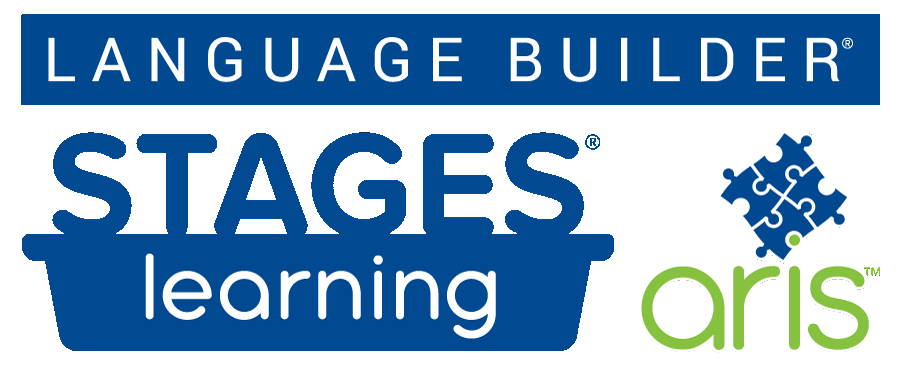
The explosion of apps available on tablets like the iPad has been an exciting opportunity for children with autism. It may come as no shock to parents and educators that in general, children with autism prefer and are more engaged during app-based interventions than traditional interventions. And while in the past some have feared that technology could lead to social isolation, a recent study found that a group of children with autism spoke more sentences per minute together while using iPad apps than without iPads.
 But with so many options for learning, communication, and social skill development, it can be difficult for parents to navigate which apps best meet the needs of their child, or even know whether apps can be useful to develop certain skills at all.
But with so many options for learning, communication, and social skill development, it can be difficult for parents to navigate which apps best meet the needs of their child, or even know whether apps can be useful to develop certain skills at all.
Here’s some information on the best research-based apps that will help kids with ASD make the most out of their screen time.
Academics
Out of seven studies testing the effectiveness of iPad apps targeting math and science skills, all seven found that more students with autism mastered learning targets through apps than traditional worksheets. However, less information is available for reading apps. One study found that students with autism responded better to teacher-led than app-based reading comprehension interventions.
Recommended: One research-tested app is Math Racer, a math fact fluency builder found to be effective for children with autism. Students with ASD increase engagement with their peers while practicing math skills, because the app allows you to race other users and track high scores!
Language Development
Because expressive and receptive language involves face-to-face interaction, it seems unlikely that language skills could be improved by an iPad. While current research on iPad language development for children with autism in limited, more general studies have found iPad interventions to serve as effective language therapy materials.
![]() Recommended: Stages Learning Materials offers the Language Builder Pro app, which includes hundreds of words and images and customizable presentations. The app also allows you to create custom flashcards and save lessons. The Language Builder series is one of the most frequently used image collections used by researchers studying autism.
Recommended: Stages Learning Materials offers the Language Builder Pro app, which includes hundreds of words and images and customizable presentations. The app also allows you to create custom flashcards and save lessons. The Language Builder series is one of the most frequently used image collections used by researchers studying autism.
Recommended: Stages Learning Line provides a customized language development app for teachers and parents. Thousands of high quality images can be combined for personalized lessons to teach new language skills or choose from hundreds of already created lessons such as farm animals, transportation, holidays, and cooking.
Learn more about the Stages Learning Line Platform
Communication
In comparison with traditional picture exchange communication methods, iPads as a speech generating device (SGD) have been shown to have greater success and take less time.
Recommended: The most popular app used by researchers is Proloquo2Go, which was used most and found to be effective in studies with the largest number of children. Proloquo increased children with ASD’s ability to make requests and answer questions at school. Users can create as many communication books as needed, or download interactive templates for free.
Social Skill Building
Two small studies found that social stories presented via iPad increased the play skills and on-task behavior of preschoolers with autism. Collaborative iPad games used by students with ASD alongside neurotypical peers were found to facilitate positive social skills like turn-taking, empathy, and shared joy.
Recommended: Parents found that Social Story Creator & Library, a flashcard app that lets users create content with text, pictures, and audio, was easy to use. The app can be used to create social stories and directions for social activities like ordering food at a restaurant.
Final Thoughts
Every child with autism is different, and will have their own preferences and needs related to apps. Apps for Children with Special Needs is a website dedicated to compiling apps used by teachers, therapists and parents and currently lists over 1000 professionally chosen apps. Best of luck in choosing your child or student’s tablet activities!
References
A Comparison of Communication Using the Apple iPad and a Picture-based System: Augmentative and Alternative Communication: Vol 28, No 2. (n.d.).
Boyd, L. E., Ringland, K. E., Haimson, O. L., Fernandez, H., Bistarkey, M., & Hayes, G. R. (2015). Evaluating a Collaborative iPad Game’s Impact on Social Relationships for Children with Autism Spectrum Disorder. ACM Trans. Access. Comput., 7(1), 3:1–3:18.
iPads and the Use of “Apps” by Children with Autism Spectrum Disorder: Do They Promote Learning? (n.d.).
Lorah, E. R., Parnell, A., Whitby, P. S., & Hantula, D. (2015a). A Systematic Review of Tablet Computers and Portable Media Players as Speech Generating Devices for Individuals with Autism Spectrum Disorder. Journal of Autism and Developmental Disorders, 45(12), 3792–3804.
Lorah, E. R., Parnell, A., Whitby, P. S., & Hantula, D. (2015b). A Systematic Review of Tablet Computers and Portable Media Players as Speech Generating Devices for Individuals with Autism Spectrum Disorder. Journal of Autism and Developmental Disorders, 45(12), 3792–3804.
Murdock, L. C., Ganz, J., & Crittendon, J. (2013). Use of an iPad Play Story to Increase Play Dialogue of Preschoolers with Autism Spectrum Disorders. Journal of Autism and Developmental Disorders, 43(9), 2174–2189.
Ok, M. W. (2018). Use of iPads as Assistive Technology for Students with Disabilities. TechTrends, 62(1), 95–102. https://doi.org/10.1007/s11528-017-0199-8
Roches, D., A, C., Balachandran, I., Ascenso, E. M., Tripodis, Y., & Kiran, S. (2015). Effectiveness of an impairment-based individualized rehabilitation program using an iPad-based software platform. Frontiers in Human Neuroscience, 8. https://doi.org/10.3389/fnhum.2014.01015
Systematic review of collateral effects of focused interventions for children with autism spectrum disorder - Katherine Ledbetter-Cho, Russell Lang, Laci Watkins, Mark O’Reilly, Claudia Zamora, 2017. (n.d.). Retrieved September 21, 2018, from http://journals.sagepub.com.ezp-prod1.hul.harvard.edu/doi/full/10.1177/2396941517737536
Using iPods® and iPads® in teaching programs for individuals with developmental disabilities: A systematic review - ScienceDirect. (n.d.). Retrieved September 21, 2018, from https://www-sciencedirect-com.ezp-prod1.hul.harvard.edu/science/article/pii/S0891422212001941

.jpg)


